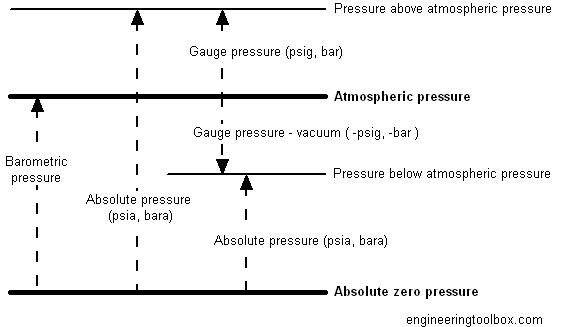When it comes to measurements, the everyday kind that deal with things like air pressure, tire pressure, blood pressure, etc., there is no such thing as an absolute accuracy. And yet, as with most things, scientists are able to come up with a relatively accurate way of gauging these things by measuring them relative to other things. When it comes to air pressure (say for example, inside a tire), this takes the form of measuring it relative to ambient air temperature, or a perfect vacuum. The latter case, where zero pressure is referred against a total vacuum, is known as Absolute Pressure. The name may seem slightly ironic, but since the comparison is against an environment in which there is no air pressure to speak of.
In the larger context of pressure measurement, Absolute Pressure is part of the “zero reference” trinity. This includes Absolute Pressure (AP), Gauge Pressure, and Differential Pressure. As already noted, AP is zero referenced against a perfect vacuum. This is the method of choice when measuring quantities where absolute values must be determined. Gauge Pressure, on the other hand, is referenced against ambient air pressure, and is used for conventional purposes such as measuring tire and blood pressure. Differential Pressure is quite simply the difference between the two points.
Cases where AP are used include atmospheric pressures readings: where one is trying to determine air pressure (expressed in units of atm’s, where one is equal to 101,325 Pa), Mean Sea Level pressure (the air pressure at sea level; on average: 101.325 kPa), or the boiling point of water (which varies based on elevation and differences in air pressure). Another instance of AP being the method of choice is with the measurement of deep vacuum pressures (aka. outer space) where absolute readings are needed since scientists are dealing with a near-total vacuum. Altimeter pressure is another instance, where air pressure is used to determine the altitude of an aircraft and absolute values are needed to ensure both accuracy and safety.
To produce an absolute pressure sensor, manufacturer will seal a high vacuum behind the sensing diaphragm. If the connection of an absolute pressure transmitter is open to the air, it will read the actual barometric pressure (which is roughly 14.7 PSI). This is different from most gauges, such as those used to measure tire pressure, in that such gauges are calibrated to take into account ambient air pressure (i.e. registering 14.7 PSI as zero).
We have written many articles about absolute pressure for Universe Today. Here’s an article about Boyle’s Law, and here’s an article about air density.
If you’d like more info on absolute pressure, check out an article about pressure from Wikipedia. Also, here’s another article from Engineering Toolbox.
We’ve also recorded an entire episode of Astronomy Cast all about Temperature. Listen here, Episode 204: Temperature.
Sources:
http://en.wikipedia.org/wiki/Pressure_measurement
http://www.pumpworld.com/absolute%20pressure.htm
http://www.sensorsone.co.uk/pressure-measurement-glossary/absolute-pressure.html
http://en.wikipedia.org/wiki/Atmospheric_pressure
http://en.wikipedia.org/wiki/Altimeter

